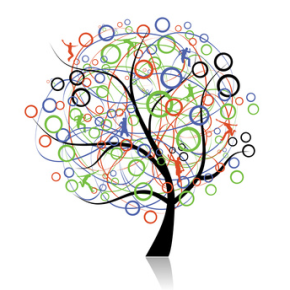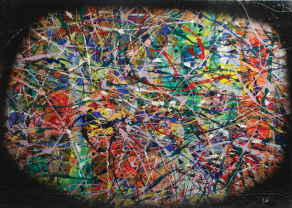
How often do you feel the tensions surrounding innovation? A tough part of managing within larger organizations is in reducing the layers and competing forces, the underlying tensions that innovation (uncertainty) brings out?
Hierarchy so often dominates or dictates the speed of what we do. That is so often set in weird logic and a shrug of the shoulders.
Confronted by the need for gathering facts, innovation often struggles as much of this takes significant time and is often outside the organization’s present understanding.
It is in the pursuit of logic, and often this lacks real (hardened) facts that hold innovation back, as it runs on a very different ‘timeline’ too much of our everyday organization processes or approaches.
In this post, I aim to tackle the question of “Reducing the tension in the layers or structures for innovation.” It follows from a recent post on “peeling away the layers of your innovation reality.”
This is a more extended read than usual, about eight to ten minutes, so be ready for that, please.
Often we forget to reinforce the very design within our organizational structures, we leave role structures incomplete and uncertain, or we always seem to be changing them, before they have had any real chance to ‘form and storm.’
The constant re-organization is ‘killing’ the organization to form any rhythm. Innovation is often in that uncomfortable territory of ‘not knowing,’ it cuts across established structures, and so many time challenges the “status quo.” I often suggest that “innovation is a very uncomfortable bedfellow to have around. It does need separation, or it will never perform at its ‘very best.’
Let’s take a look at some of the consequences of these tensions.
Presently we see in large organizations this lack of “pushing for risk” or wanting to change the underlying business offerings. There is always a stated “we must be innovative to survive,” but we very rarely see what this means in real ongoing support to give that some framing, some guidelines, and clearly identified resourcing.
How many times do you see the organization set the deliverables in often ‘woolly’ undefined or impossible ways to truly measure the success of innovation. Unable to meet the very system they impose of requiring KPIps by capturing and measuring what this means, so innovation struggles and often dumb-sized to meet arbitory measures, so it “fits” within the system..
This verbal remit never gets the underlying points to encourage those tasked with innovation to go and explore. This vagueness just further promotes uncertainly, delays any improved performance, and we end up with the same mediocre result, where safely has ‘ruled’ the day.
Organization layers grind against each other, like tectonic plates that force further disruption and upheaval.
Will we ever face up to the forces that immobilize our organizations honestly?
If we really want to work progressively towards an adaptive organization, we must stop the knee-jerking or react to short-term pressures. To bring a better level of clarity to the many left open, fuzzy, and still so unclear areas within organizations, leadership must find better ways to resist their impulses to re-organize constantly. Strengthening what they have, allowing the existing structures to expand outwardly, is sometimes better than breaking them into different structures that reinforce new silo thinking.
We still seem to love the ‘carrot and stick’ approach.
In leaving so much open to even ignoring critical parts of a business’s performance or operating model allows leaders one minute, use outcomes as the ‘whipping boy’ for unfortunate or disappointing results and, in so doing, slowly immobilize those underneath, scared to make a mistake or be associated with failure.
Adaptation to short-term performance works both ways. To the shareholder demanding immediate results but also to the management to hide behind this to create unnatural built-in tensions and often create a shearing effect. Innovation gets caught up in this. It can’t solve complicated product design solutions in thirteen weeks.
It can show quarterly results of progress, but that is often for internal consumption only. Innovation becomes a catch-all phrase, so it gets dumbed down to reinforce “our organization” is constantly undertaking it.
Innovation gets caught up in the needs of the reporting requirement so it can fit an arbitrary and stupid timeline that is required to adapt to a financial calendar year. Forced by the “bean counter” to be broken down into reporting on a quarterly result, as that is required by the system. No wonder we have tensions between innovation and an organization geared to this financial numbers game.
Organization structure ‘grinds’ against each other, like tectonic plates that force further disruption and upheaval.
They ‘freezeout’ creativity unless it ‘arrives’ from the top of the organization, then it is often super-imposed, but is that optimized to get the best out of the creative or discovery process`? Eventually, the organization dies if it cannot allow the natural generating new forms of creativity from within, this has been hollowed out by this constant demanding and imposing from the top.
The organizational design needs to change to allow for creativity to flow back in.
We need to ensure creative knowledge flows up and down organizations. We need to change our thinking from layers into a network of connected parts that we keep small, flat, and focused but constantly aware their existence is dependent on others outside their mini-ecosystem. The “ebb and flow” of knowledge gain and interactions need to be allowed to evolve, not forced, or simply being reliant on machine learning or automating the process.
Today these different layers actually require several levels of reconfiguration designed into the organization. Creativity and innovation are primarily human endeavors. We add layers onto further layers, and each time we are constraining the organizations or the individuals to explore, they stay ‘trapped’ within their space if we superimpose on them. We progressively build up an unhealthy tension.
Imposing the killer effect of time just because of a financial calendar is stupid – it hurts innovation significantly
Just look at how organizations impose time on us. One really critical one to address and to ‘kill off’ is the pressure of time. Imposing time as a condition for innovation can be a real killer. Time horizons to achieve different tasks often cannot be ‘legislated’ or ‘dictated,’ but sadly, they are forced on reluctant innovators responsible for the delivery of new concepts.
We need to re-establish the difference between goals – within a specified period covered (one year), objectives – attained later but are progressed within the period and finally ideals– those unattainable but possible concepts that ‘advance’ at slower rates and go well beyond standard goals. Innovation works within this environment, actually it will thrive.
Not just the incremental, but the radical, disruptive, and breakthrough innovation craved for by the top management, can finally have a ‘decent’ time horizon to be managed through. Planning needs to account for all three horizons, and operating across these needs different mindsets, irrespective of the industry you are in, it does not matter if you are building planes or developing food products.
Managing innovation across the three horizon methodology helps reduce tensions, design innovations that can be more radical or breakthrough. The three horizon methodology spaces out the activity, thinking, and activity, it allows innovation to be defined and determined by its complexity and its time/value relationship in importance and complexity.
Tacking the incompatibles to ease the tensions
We really should stop pretending that innovation is not so hard and state it is often incompatible to much of what we perform on our daily business, it is really so often just incompatible, and we should recognize this.
The task of managing intangibles (unknowns) alongside the tangibles (known) needs a greater appreciation of their complexities and the difficulties of balancing the two for achieving a ‘decent’ result. The unknowns need far more investigation, relationship understanding, and evaluations to turn them from a possible discovery into a worthwhile one that can begin to be quantified.
In Leadership, I believe, would need to understand innovation far more in this demanding environment of inquiry. No wonder it is often ducked and just vaguely talked about as much of innovation understanding is still poorly understood in its impacts and effect. We do need to address this lack of acute innovation management within our organizations. It is not ‘business as usual.’ It is managing the process of unusual business inquiry.
Reducing activities and replacing these with outcome orientation
Innovation is no different from what we expect from efficiency or effectiveness; we want to see the outcomes, the results from all the investments, energy, and inputs. Outcome orientation holds a precious key to think about far more. We have struggled on many occasions to establish robust metrics for judging innovation. They seem to get lost within organizations’ obsession to judge the whole organization by the same KPI’s.
Often we find part of the innovation activities has been assigned to some other cost center, and organizations create cost center tensions in allocating resources or the necessary time. We should break activities down into outcome orientation ones. Were the activities contributing to efficiency accounting or actually progressing the innovation concept along? We need to judge these through the effectiveness of the outcome. Forget the allocation input, it is the successful innovation outcome.
Scott Anthony had pointed out in an old article “Negotiating Innovation and Control’ on the different ways to balance tension, there is one, in my opinion, that needs more in-depth investigation and development, and that is the ‘ambidextrous’ one. This makes distinctions but links the parts of the whole organization by developing competing frames, not competing forces.
Roger Martin suggests in one of his books, “The Opposable Mind,” that we need to establish “integrative thinking” as part of this need to change. The ability to understand the difference between exploring and exploiting is critical to how we manage innovation in its different needs of discovery and execution.
Innovation should be alongside as an equal partner to efficiency. It becomes efficient innovation and core to what you do and how you operate.
Seeking constant efficiencies is slowing down our organizations. We need to do the opposite, to speed them up and capitalize on finding innovation opportunities quickly and then knowing how to scale them equally fast. We need to do this by developing the competencies and understandings of experimentation, piloting, prototyping in fast, discreet and measured ways
The worrying thing is the slow components dominate any dynamics within the system, and the rapid aspects have to simply follow along. I see this an awful lot. In all organizations, it accommodates the slow, thereby reducing down the very effectiveness of the organization to adapt, respond, and grow to market changes. Slow holds everything back, and we can’t afford to keep waiting in a world where others are more adaptive or agile.
“Slow constrains quick, slow controls quick.”
The only way to ensure speeding up is to be coherent on purpose, clarify the bounds and governing principles that need to be enacted and evolve the organization design away from layers and hierarchy.
We need to build up a series of internal networks that depend on each other but continuously reach out to connect, share, and exchange but more within an organizational design that is flat but highly responsive and interdependent to work well. This needs orchestration, not a hierarchy in its managing. They need constant attention; they need to speed up, to be encouraged, and well-resourced.
We need to work a lot harder on all the dysfunction points in organizations
Only by consciously working on all the dysfunction points within an organization will undoubtedly reduce the tensions, reduce the ‘shearing effects.’ It allows the organization in all its layers, to ‘react’ by recognizing its tension points and set about addressing them, not allowing them to fester and continue.
Organizations somehow has to reflect far more on its continued lack of performance. It takes time to identify the ‘tension points’ and then to undertake the appropriate action to come back into a balance.
A balance where innovation sits equally alongside efficiency, especially if both focus on outcome orientation, and that certainly is not the current business way we often see today. We so often find much of the ‘tension’ is not favorable, it is debilitating.
![]() All of us are at present, caught up in the terrible spread of the Coronavirus (COVID-19). It is hard to think about other things when such societal and economic impact is hitting each of us every day.
All of us are at present, caught up in the terrible spread of the Coronavirus (COVID-19). It is hard to think about other things when such societal and economic impact is hitting each of us every day.


